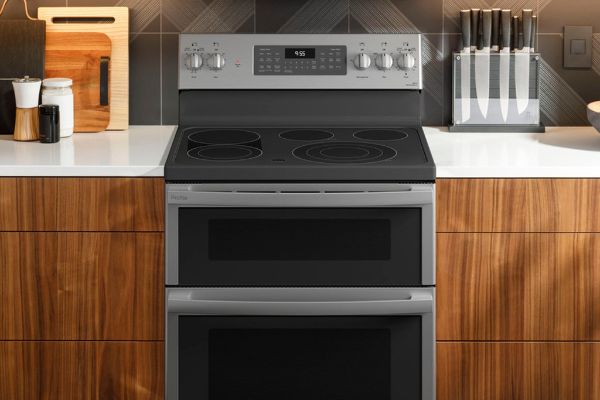When it comes to selecting a range for your kitchen, you have several options to choose from, including gas, electric, and induction ranges. Each type of range comes with its own set of advantages and considerations.
In this blog post, we will explore the differences between gas, electric, and induction ranges, helping you make an informed decision based on your cooking preferences, lifestyle, and kitchen setup.
Table of Contents
Gas Range
- Cooking Performance:
Gas ranges are known for their precise temperature control. The open flame provides instant heat, allowing for quick adjustments during cooking. Gas ranges offer excellent heat distribution, resulting in even cooking and the ability to achieve desired textures, especially when it comes to cooking with a flame. - Cooking Flexibility:
Gas ranges offer a high level of control, making them well-suited for various cooking techniques. The open flame allows for direct heat application, making it easier to achieve the perfect sear or char on certain dishes. Additionally, gas ranges provide more consistent heat during baking, which can be beneficial for certain recipes. - Energy Efficiency:
Gas ranges tend to be more energy-efficient compared to electric ranges, as they heat up and cool down quickly. However, they may have lower efficiency ratings compared to induction ranges.
Electric Range
- Heat Distribution:
Electric ranges typically feature coil or smooth-top electric burners. While coil burners can have uneven heat distribution, smooth-top electric burners provide a more even and consistent cooking surface. Electric ranges with radiant heating elements deliver steady and precise heat control. - Cooking Versatility:
Electric ranges offer versatility in terms of cookware compatibility. You can use a wide variety of pots and pans, including non-magnetic materials. Additionally, electric ranges often feature dual-element burners, allowing you to adjust the size of the cooking area based on your cookware size. - Easy Maintenance:
Electric ranges are generally easier to clean compared to gas ranges. Smooth-top electric ranges have a flat surface that can be easily wiped down. However, caution must be exercised to prevent scratches or damage to the surface.
Induction Range
- How It Works:
Induction ranges use electromagnetic technology to directly heat the cookware. The heat is generated within the pot or pan, offering precise and efficient cooking. Induction ranges feature smooth glass-ceramic cooktops and are known for their rapid heat-up and responsive temperature control. - Efficiency and Safety:
Induction ranges are highly energy-efficient, as they deliver heat directly to the cookware, minimizing heat loss. They heat up quickly and provide immediate heat adjustments. Induction ranges also have a cool-to-touch surface, reducing the risk of burns. Some models include safety features like automatic shut-off when no cookware is detected. - Cooking Speed and Control:
Induction ranges offer fast and precise cooking. They heat up faster than gas or electric ranges, allowing for quicker cooking times. The ability to adjust temperatures instantly provides precise control over the cooking process.
Gas vs. Electric vs. Induction Range
| Features | Gas Range | Electric Range | Induction Range |
|---|---|---|---|
| Cooking Performance | Precise temperature control, instant heat | Even heat distribution, steady heat control | Rapid heat-up, precise temperature control |
| Cooking Flexibility | Direct flame cooking, versatile for various techniques | Various cookware compatibility, dual-element burners | Various cookware compatibility, responsive heat adjustments |
| Energy Efficiency | Efficient heating, quick heat-up and cool-down | Varies depending on model, moderate efficiency | Highly efficient, direct heat to cookware |
| Heat Distribution | Even heat distribution with open flame | Even heat distribution, radiant heating elements | Even heat distribution, heat generated in cookware |
| Safety | Requires caution with open flame, potential gas leak hazards | No open flame, reduced risk of burns | Cool-to-touch surface, automatic shut-off features |
| Maintenance | Regular cleaning required, easy stovetop cleaning | Easy-to-clean surface, caution needed to prevent scratches | Smooth glass-ceramic surface, easy to clean |
Conclusion
Choosing the right range for your kitchen depends on your cooking style, preferences, and kitchen setup. Gas ranges offer precise temperature control and versatile cooking options. Electric ranges provide cooking flexibility and easy maintenance. Induction ranges offer energy efficiency, rapid heat-up, and precise temperature control.
Consider factors such as cooking performance, energy efficiency, maintenance, and safety when making your decision. By understanding the differences between gas, electric, and induction ranges, you can select the option that best suits your culinary needs and enhances your cooking experience.

